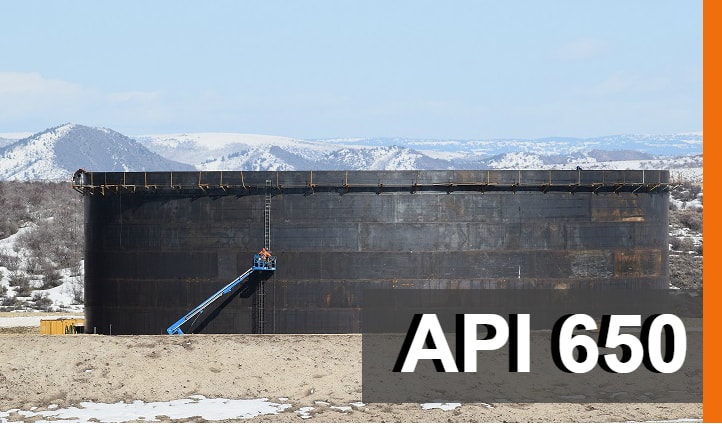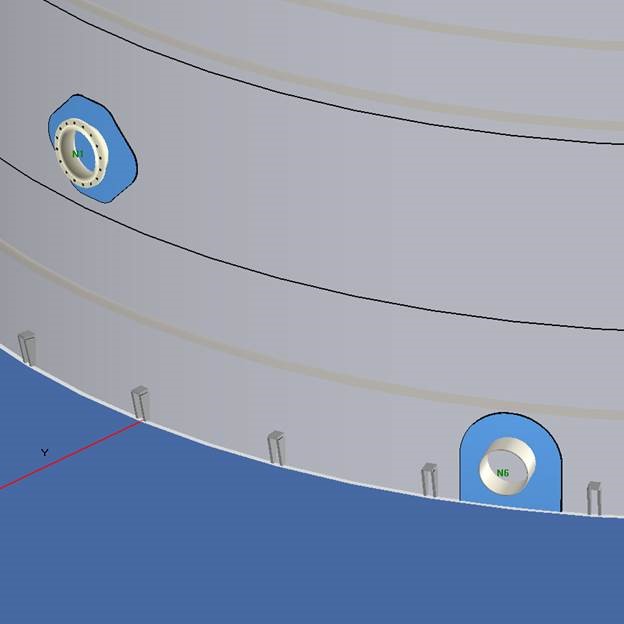A Detailed Look at the Setup Refine of Welding Inspection Techniques
Welding evaluation is an important procedure that assures structural stability and security. The setup of inspection techniques entails a number of systematic steps, each essential to achieving reputable outcomes. From preparation and tool selection to carrying out aesthetic and non-destructive tests, each stage demands careful focus. Understanding these treatments can considerably enhance top quality guarantee in welding tasks. What challenges emerge in executing these strategies, and how can they be efficiently addressed?
Recognizing the Significance of Welding Examination
Welding assessment is a vital component of guaranteeing structural honesty and safety and security in construction and manufacturing processes. This technique involves assessing welded joints for problems, making certain that they meet details standards and laws. By methodically evaluating weld high quality, assessors can recognize issues such as cracks, voids, and insufficient fusion, which can jeopardize the toughness and durability of frameworks.
The value of welding inspection prolongs beyond prompt safety issues; it helps avoid costly failures and possible risks in the long-term. Effective inspection methods foster compliance with industry standards, therefore enhancing the general reliability of welded parts. In addition, a robust evaluation process contributes to preserving the track record of makers and home builders, as it ensures clients of the top quality of their projects. Eventually, recognizing the relevance of welding evaluation is vital for promoting safe building practices and guaranteeing the longevity of important framework and items.
Picking the Right Equipment for Inspection
When selecting the suitable tools for examination, it is vital to contemplate the particular needs of the welding process and the products involved. Different inspection methods, such as visual, ultrasonic, and radiographic screening, demand distinctive tools tailored to their distinct needs. For visual evaluations, tools like amplifying calipers and glasses are important for reviewing weld high quality. Ultrasonic testing requires customized equipment capable of sending and getting audio waves to discover internal problems. Radiographic testing, on the various other hand, utilizes X-ray or gamma-ray resources alongside delicate movie or digital detectors to reveal disparities.
Furthermore, individual protective equipment (PPE) is vital to ensure the safety of assessors throughout evaluations. Selecting the right tools not just improves the accuracy of inspections however likewise adds to the overall honesty and safety of the welding job. Consequently, a thorough understanding of readily available tools and their applications is crucial for reliable welding inspection.
Getting ready for the Inspection Refine
Prior to launching the inspection procedure, it is necessary to establish a detailed strategy that lays out the extent and goals of the assessment. This strategy must consist of particular standards that specify what constitutes acceptable top quality in the welding job being inspected. Recognizing the appropriate codes and standards is important, as they will direct the inspection standards and methodologies.
Furthermore, employees associated with the assessment should be properly educated and licensed in welding evaluation strategies to assure integrity and accuracy. A checklist can be helpful in organizing the various elements of the examination, varying from tools preparedness to environmental problems that can impact the analysis.

Finally, logistical factors to consider such as organizing, available sources, and interaction in between team members must be attended to. By preparing methodically, examiners can enhance the efficiency of the evaluation and make sure that all important factors are appropriately considered before proceeding with the evaluation itself.
Performing Aesthetic Inspections

Conducting aesthetic assessments is a vital action in the welding evaluation procedure, calling for careful preparation to assure reliable analysis. Examiners need to recognize with key flaw signs that can signify potential concerns in weld quality. By concentrating on these aspects, one can boost the total reliability of the evaluation outcomes.
Getting Ready For Visual Examination
Visual evaluation works as a critical primary step in the welding examination procedure, guaranteeing that any kind of prospective defects are determined early (API 650 Welding Inspection). Proper preparation is vital for efficient aesthetic assessment. Inspectors should start by reviewing pertinent documents, consisting of welding treatments and specifications, to comprehend the job requirements. They need to gather essential devices, such as multiplying glasses, flashlights, and proper personal protective devices (PPE) An extensive evaluation of the inspection area is critical; examiners should confirm it is cost-free and clean of obstructions. In addition, it is necessary to establish perfect lights problems to improve presence of welds. By taking these preparatory actions, assessors can develop a setting for recognizing disparities and assuring the honesty of the bonded structures
Secret Defect Indicators
An extensive understanding of crucial flaw signs is vital during aesthetic inspections to ensure the high quality and safety of welded joints. Assessors ought to concentrate on details signs such as cracks, porosity, damages, and incomplete combination. Cracks might show up as sharp lines and can endanger architectural stability. Porosity manifests as little holes that can weaken weld toughness. Undercuts, which are grooves along the weld edge, can bring about tension concentration. Incomplete fusion indicates that the weld metal did not effectively bond with the base material, resulting in a weak joint. By methodically recognizing these flaws, inspectors can determine compliance with industry standards and enhance the overall dependability of bonded structures, eventually contributing to safer functional problems.
Implementing Non-Destructive Testing Strategies

Countless non-destructive screening (NDT) strategies are integral to guaranteeing the integrity of welded structures without endangering their functionality. These methods enable assessors to assess weld quality and find problems without causing damages to the materials being examined. Usual NDT strategies consist of ultrasonic testing, radiographic testing, magnetic bit testing, and color penetrant screening. Each technique serves a certain objective, addressing different types of imperfections such as fractures, porosity, or incomplete blend.
Carrying out NDT strategies needs a methodical method, starting with choosing the appropriate method based upon the products and the nature of the weld. Educating employees in these strategies is important for view it now exact outcomes. In addition, developing clear procedures and standards guarantees uniformity throughout the examination procedure. By integrating NDT right into the welding examination process, companies can enhance the reliability of their products while lessening potential risks connected with structural failures. This aggressive approach ultimately adds to preserving security and quality requirements in bonded building and constructions.
Examining and recording Examination Results
Efficient documentation and analysis of assessment outcomes are important elements of the welding inspection process. Exact documents of examination searchings for work as a reference for quality control and compliance with sector criteria. API 650 Welding Inspection. Examiners need to make use of organized kinds or digital platforms to log information such as the kind of weld, examination approaches utilized, and any kind of inconsistencies determined throughout the analysis
Comprehensive evaluation is important as soon as information is accumulated. This entails contrasting outcomes against established requirements to identify trends or reoccuring problems. Statistical devices might be utilized to evaluate defects and evaluate their effect on overall weld quality.
Moreover, reliable communication of findings to pertinent stakeholders is important. Reports and summaries ought to be concise and clear, highlighting key insights and referrals for rehabilitative actions. By methodically recording and assessing assessment results, companies can cultivate continuous enhancement in welding techniques and boost product honesty.
Regularly Asked Concerns
What Certifications Are Needed to Become a Welding Assessor?
To come to be a welding inspector, one usually requires relevant accreditations such as AWS CWI, along with experience in welding techniques, knowledge of welding codes, and effectiveness in evaluation methods to guarantee top quality and safety and security standards.
Just How Often Should Welding Inspections Be Conducted?
Welding assessments ought to be performed consistently, usually after each weld is completed, and regularly throughout jobs. Aspects such as task intricacy, market criteria, and governing requirements can influence the regularity of these assessments.
What Is the Price of Welding Evaluation Solutions?
The price of welding evaluation solutions differs significantly based upon elements such as job dimension, place, and intricacy. Usually, costs vary from $100 to $150 per hour, with extra fees for specialized testing and qualifications.
Are There Certifications for Welding Inspectors?
Yes, there are different certifications for welding assessors, including those used by the American Welding Culture (AWS) and the International Institute of Welding (IIW) These certifications ensure inspectors have the essential abilities and understanding for efficient assessments.

Exactly how Do I Choose an Inspection Solution Service Provider?
To choose an assessment company, one should assess credentials, experience, industry online reputation, and consumer evaluations. In addition, comparing service offerings and pricing can aid ensure the picked service provider fulfills specific job needs effectively.
Furthermore, workers included in the examination must be properly trained and certified in welding evaluation techniques to assure dependability and accuracy. Carrying out aesthetic examinations is an important action in the welding evaluation process, needing careful preparation to find out this here ensure efficient analysis. Visual evaluation offers as a critical very first step in the welding inspection procedure, ensuring that any pop over to this web-site potential problems are recognized early. Effective documentation and evaluation of assessment results are important components of the welding assessment process. Welding examinations ought to be carried out consistently, commonly after each weld is finished, and occasionally throughout projects.